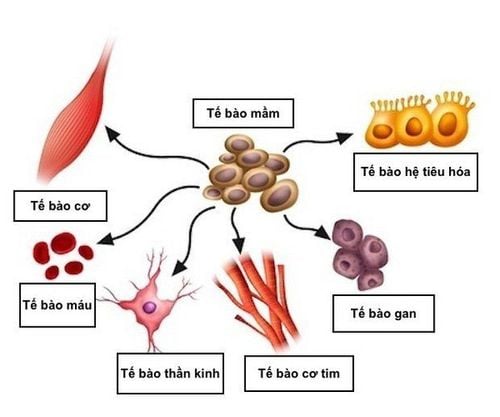This is an automatically translated article.
Germ cell tumors in children are common in children from 0 to 3 years old, in which, malignant tumors of germ cell origin are called cancer. Germ cell tumors in children when detected early and combined with the correct treatment regimen will have a high cure rate.
1. What is a germ cell tumor?
Germ cell tumors are tumors that arise from germ cells located in the embryo. It can be a malignant tumor or also a benign tumor. Although it is a rare disease, germ cell tumors in children, if detected early and treated according to the right regimen, will give good results, the cure rate is relatively high.
To date, the cause of germ cell tumors in children is still unknown. Because germ cells are the cells that produce and develop into eggs (in women) and sperm (in men), germ cell tumors often directly affect the female reproductive organs (ovaries). eggs) and males (testicles).
In some special cases, the germ cells move to other parts of the body and continue to grow causing tumors in that part.
2. Types of germ cell tumors in children

U tế bào mầm trẻ em thường được phát hiện ở giai đoạn dậy thì
2.1 Childhood germ cell tumors on the genitals Most germ cell tumors in children usually develop on the genitals, specifically:
Pediatric germ cell tumors in girls' ovaries: Usually, tumors are discovered during puberty (in girls, puberty begins between the ages of 10 and 15). Most cases are benign tumors, however, if they are malignant and undetected, it will affect the fertility of the baby. Childhood germ cell tumor in the testicles of boys: Tumors commonly cause testicular cancer in boys. If detected late, the tumor may be advanced. 2.2 Childhood germ cell tumors outside of the genitals Some very rare cases, germ cell tumors in children do not develop on the genitals but develop in other parts of the body such as: neck, abdominal cavity, hip-pelvic region, pituitary gland, spinal column, mediastinum, ...
Germ cell tumors in the pituitary gland: Germ cells move to the pituitary gland and develop into a tumor, causing symptoms such as visual-olfactory disturbances. Cervical germ cell tumors: Usually tumors develop on the side of the cervical spine. Here, germ cell tumors in children do not cause pain, but if touched by hand, they can be seen and are often confused with lymph nodes in the neck. Chest germ cell tumor (including heart, lung, mediastinum): Most cases are found to be malignant tumors, remaining very few cases are benign tumors. In the chest cavity, when the tumor grows, it will cause pressure on the child, making it difficult to breathe, cough, and choke when swallowing food. Abdominal germ cell tumors: In this case, most germ cell tumors in children are found on either side of the spine - the peritoneum. The tumor is painless and can be detected by palpation. Pelvic germ cell tumors: Pelvic germ cell tumors are usually found in children under 3 years of age. Here, the tumor grows more severe and is often misdiagnosed with other diseases. Trunk germ cell tumor: During pregnancy, if germ cells migrate to this area and cause tumor malformation, it can be found through fetal ultrasound. As a rare disease, germ cell tumors in children, when detected and treated early, have a good prognosis.
If you have unusual symptoms, you should be examined and consulted with a specialist.
Please dial HOTLINE for more information or register for an appointment HERE. Download MyVinmec app to make appointments faster and to manage your bookings easily.
MORE:
What happens after orchiectomy Diagnosing testicular cancer Formation and prevention of blood clots in cancer patients













